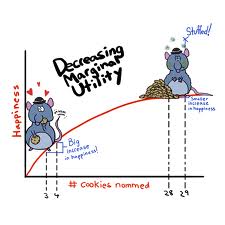In an article in Aeon magazine, Michelle Nijhuis writes about her experience living in—and eventually leaving—an off-the-grid commune on Colorado’s Western slope. What drew Michelle to this lifestyle is a tantalizing proposition: “a place where [Michelle and her friends] could unplug from the electrical grid—and from a society they saw as wasteful and destructive.” At least, as someone who is concerned about climate change and about the future of the planet’s natural resources, the low-footprint lifestyle is appealing to me. But along the way, Michelle and her family discover they need—or at least want and value—some things that an unplugged, tucked-away, life cannot offer.

Michelle Nijhuis and family, from Aeon Magazine
Although Michelle states outright that she was never fully “off the grid” in economic terms (gas, clothing, some groceries came from the outside), her description of the grid sheds some light on why exactly she wanted off it in the first place. “We were a mile and a half from town, 30 miles from a Walmart, 70 miles from a Starbucks, and more than an hour’s drive from anything that qualified as an airport.” Thirty miles was probably barely enough space between them and the ultimate symbol of excess, corporate profits, and the demise of the proverbial main street.
After years on the commune, people start to return to the society they had left. It wasn’t for the comfortable lifestyle and Starbucks lattes, but for things that only a bigger society can provide:
“When Nancy, a chiropractor, was diagnosed with breast cancer, she moved east to be closer to her extended family and to medical care. When Marc, an architect, was struck by a neurological disorder that left him unable to walk and speak, he and his family left for a larger town with wheelchair ramps and social services.”
Medical care; public services. These are economies of goods and services that provide real value to people, and they can’t exist in isolation. I’ll admit here that these are not strictly services that live in the realm of economics. They are political: societies make decisions as a whole to provide goods like wheelchair ramps through government and regulation. But it is not a problem of democracy or lack of sympathy within the commune that prevents them from taking care of their own. It makes little sense for them to install wheelchair lifts and ramps throughout the property for the one man in a wheelchair or build a hospital for a single woman with cancer. Humans derive strength from numbers, from community, from society. The principle that allows a city to provide social services, health care, and even a social life for a young girl is not so different from the one that allows us to save and lend money through banking, protect ourselves from unforeseeable catastrophe with health insurance.
 These vilified industries—banks, insurance companies—fundamentally rely on community, and they aren’t inherently bad for society. That’s not to say they don’t have problems in their current form. At a time of too-big-to-fail bank bailouts, corruption on Wall Street, and increasing income disparity, I am afraid people outside of the field of economics are seeing the skewed system, and thinking “this is what economics is all about.” I see people who want to eschew banking, money, and trade (This is partly why I wrote my first series, “Libertarians don’t like money, but they still use it”). They want to eschew what Nijhuis calls “the human grid.” I fear that people will remove themselves from the system, rather than change it. Because the banking system right now is messed up, the rules are too often written by those with the most money, and markets are skewed with subsidies and tax breaks in all the wrong places. If we choose to remove ourselves from it, we allow those who remain to perpetuate it. If we choose to stay, we can change it. We can recognize that the economy—the human grid—has a lot to offer, as long as we guide it wisely.
These vilified industries—banks, insurance companies—fundamentally rely on community, and they aren’t inherently bad for society. That’s not to say they don’t have problems in their current form. At a time of too-big-to-fail bank bailouts, corruption on Wall Street, and increasing income disparity, I am afraid people outside of the field of economics are seeing the skewed system, and thinking “this is what economics is all about.” I see people who want to eschew banking, money, and trade (This is partly why I wrote my first series, “Libertarians don’t like money, but they still use it”). They want to eschew what Nijhuis calls “the human grid.” I fear that people will remove themselves from the system, rather than change it. Because the banking system right now is messed up, the rules are too often written by those with the most money, and markets are skewed with subsidies and tax breaks in all the wrong places. If we choose to remove ourselves from it, we allow those who remain to perpetuate it. If we choose to stay, we can change it. We can recognize that the economy—the human grid—has a lot to offer, as long as we guide it wisely.













